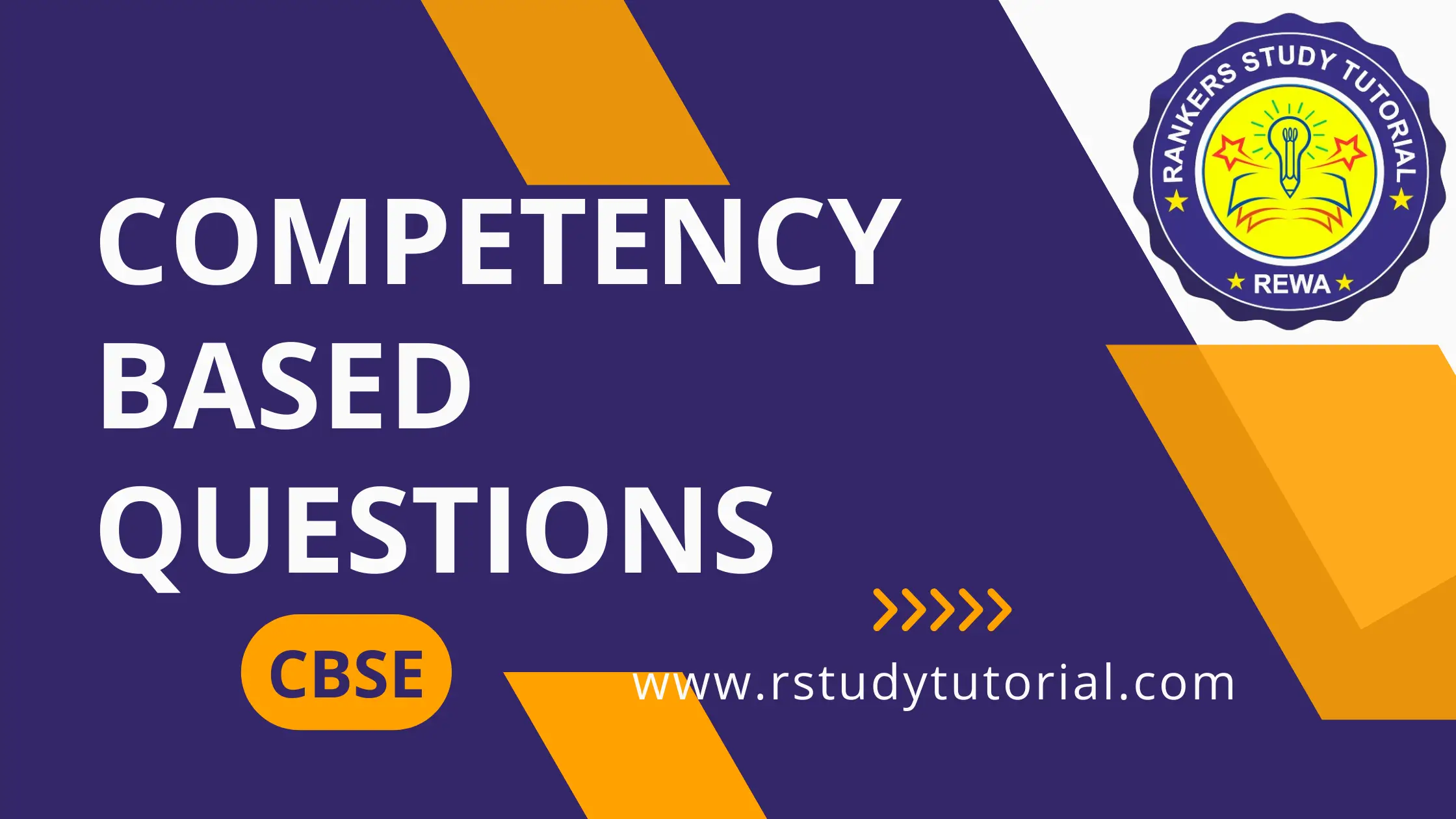Hint: Evaluate the charge flowing through a conductor in a given time, in order to calculate current flowing through it.
Question.1. A charge of 100 C flows through a bulb in 5 minutes. How much current is flowing through the bulb?
(a) 500 A
(b) 100 A
(c) 20 A
(d) 0.3 A
Question.2. A conducting wire carries 10^{21} electrons in 4 minutes. What is the current flowing through the wire?
(a) 40 A
(b) 7 A
(c) 4 A
(d) 0.7 A
Ans.1. (c) 20 A
Ans.2. (d) 0.7 A
Hint: Determine work done in moving a charge across two points, in order to calculate potential difference between two points.
Question.3. Work of 14 J is done to move 2 C charge between two points on a conducting wire. What is the potential difference between the two points?
(a) 28 V
(b) 14 V
(c) 7 V
(d) 3.5 V
Question.4. In order to move a charge of 3 C between two points on a conducting wire, 12 J of work is done. How much increase or decrease in the voltage will increase the work done on the same amount of charge to 36 J?
(a) -12 V
(b) -8 V
(c) +8 V
(d) +12 V
Ans.3. (c) 7 V
Ans.4. (c) +8 V
Hint: Identify the electrical components and their functions, in order to build a functioning circuit.
Question.5. A circuit has a charge of 2C moving through it in 3 s. Which electrical component in the circuit, if present, will show the current?
(a) Voltmeter will show a current of 6 A.
(b) Ammeter will show a current of 0.7 A.
(c) Rheostat will show a current of 0.7 A.
(d) Resistor will show a current of 0.35 A.
Question.6. The image shows a circuit diagram.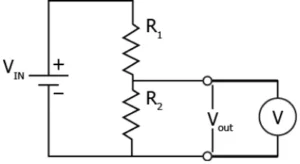
(a) current in the circuit
(b) voltage in the circuit
(c) voltage across the resistor
(d) resistance offered by the resistor
Ans.5. (b) Ammeter will show a current of 0.7 A.
Ans.6. (c) voltage across the resistor
Hint: Plot a graph between voltage and current, in order to prove ohm’s law & find resistance.
Question.7. What is the relationship between resistance and current?
(a) They are directly related to each other.
(b) They are inversely related to each other.
(c) The resistance has a greater magnitude than current.
(d) The current has a greater magnitude than resistance.
Question.8. Which plot shows the change in voltage when the current is gradually decreased across a resistor?
(a) 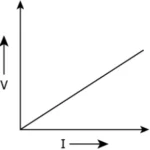
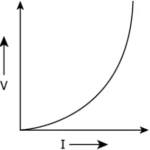
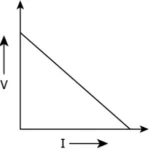
Ans.7. (b) They are inversely related to each other.
Ans.8. (a)
Hint: Define resistivity and its range for different materials, in order to classify substances as conductors, alloys and insulators.
Question.9. Which one among a bar of an alloy of mass 2 kg and a 3 kg iron bar of same dimension has greater resistivity?
(a) Iron bar because it has higher mass.
(b) Alloy bar because it has lower mass.
(c) Iron bar because it has same types of atoms.
(d) Alloy bar because it has different types of atoms.
Question.10. A piece of wire is measured to have resistivity in the order of 10^{19} Ω m. What should its material be classified into?
(a) Alloys
(b) Insulators
(c) Good conductors
(d) Poor conductors
Ans.9. (d) Alloy bar because it has different types of atoms.
Ans.10. (b) Insulators
Hint: Determine the resultant resistance in a series and a parallel combination, in order to identify the suitable combination like house, etc.
Question.11. Which combination of a 2 Ω resistor and 4 Ω resistor offers the least resistance to current in the circuit?
(a) Series combination, which results in a net resistance of 2 Ω.
(b) Parallel combination, which results in a net resistance of 2 Ω.
(c) Series combination, which results in a net resistance of 1.5 Ω.
(d) Parallel combination, which results in a net resistance of 0.5 Ω.
Question.12. The image shows a combination of 4 resistors. 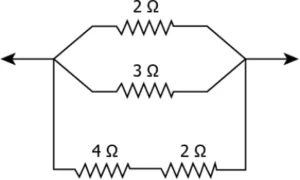
(a) 0.5 Ω
(b) 1.0 Ω
(c) 1.5 Ω
(d) 2.0 Ω
Ans.11. (d) Parallel combination, which results in a net resistance of 0.5 Ω.
Ans.12. (b) 1.0 Ω
Hint: Explain and calculate the heating effect of electric current, in order to learn working of appliances like heater and iron.
Question.13. How much more heat is produced, if current is doubled?
(a) twice the original amount
(b) thrice the original amount
(c) four times the original amount.
(d) five times the original amount.
Question.14. A bulb has a resistance of 5 Ω. If 2 A of current at 200 V flows through the bulb, how much heat is produced by the bulb in 10 minutes?
(a) 2.0 \times 10^{5} J
(b) 4.0 \times 10^{5} J
(c) 1.2 \times 10^{6} J
(d) 2.4 \times 10^{6} J
Ans.13. (b) thrice the original amount
Ans.14. (d) 2.4 \times 10^{6} J
Hint: Calculate power, in order to represent electric consumption in domestic circuits.
Question.15. In order to reduce electricity consumption at home, what kind of appliance should one purchase?
(a) one which draws low power
(b) one which produces less heat
(c) one which operates at a higher voltage
(d) one which draws a high amount of current
Question.16. An electric toaster has a power rating of 200 W. It operates for 1 hour in the morning and 1 hour in the evening. How much does it cost to operate the toaster for 10 days at Rs 5 per kW h?
(a) Rs 20
(b) Rs 400
(c) Rs 5000
(d) Rs 10000
Ans.15. (a) one which draws low power
Ans.16. (a) Rs 20

